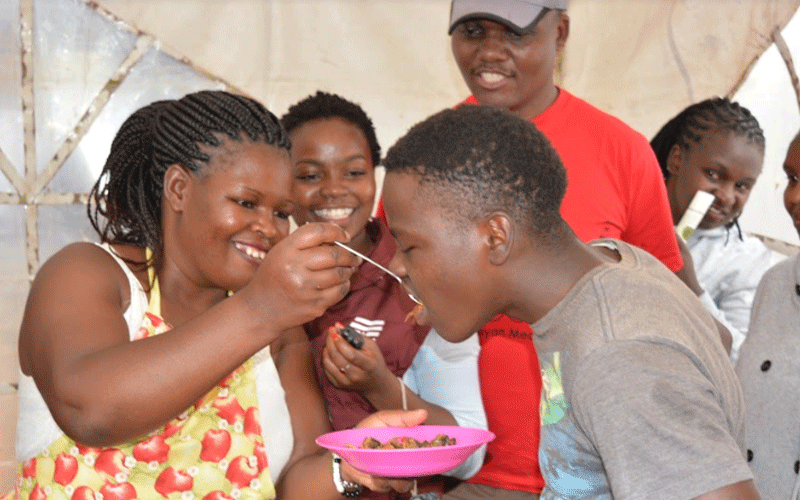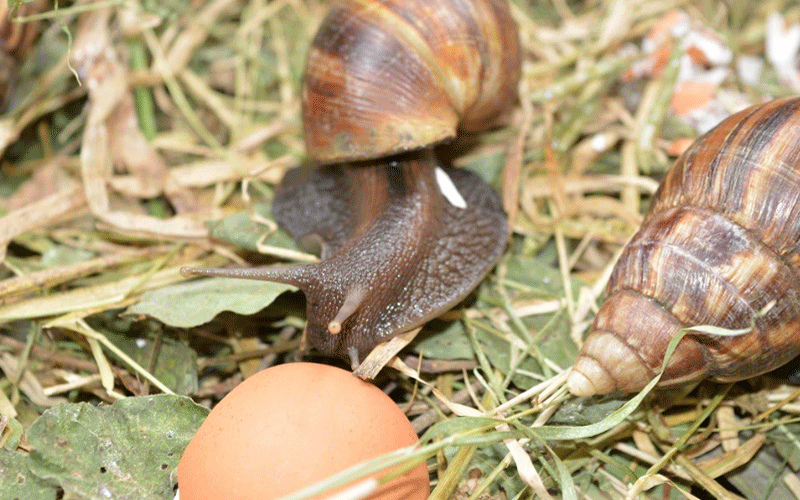Snail fry, anyone? Slippery path of marketing delicacy

Roy Lumbe @lumbe_roy
To most Kenyans, snail and delicious never appear in the same sentence. Many consider the molluscs as pesky pests that mess up homes with the slimy substance that they leave in their wake.
But residents of Nakuru at the weekend had a chance to taste the other side of the snails — the aromatic, mouth-watering side.
This was during a food fare organised by Building East African Communities Network in partnership with Hivos Kenya.
And as they found out, snails are not only highly nutritious food, it can be a source of good income.
Wangui Waweru, who is a snail farmer in Lanet, Nakuru county, said the molluscs contain 15 per cent proteins, 2.4 per cent fat and 80 per cent water.
In addition, they are rich in fatty acids, calcium, iron, selenium, magnesium and vitamins E, A, K and B12.
For Waweru, the figures can be even more sumptuous. For a kilo of snails, she fetches Sh3,000.
Currently, she has 4,500 snails in her farm, which takes just a tiny space in her compound.
At the weekend, Waweru introduced Nakuru residents to snail delicacy at the Stanchart Grounds.
So how far did she go in convincing normally food-conservative Kenyans that a snail meal is as good as any meat, if not better?

Need convincing
“It tastes like gizzard. I expected it to be slippery in the mouth but that was not case,” said Susan Mwaguta, after tasting the delicacy for the first time.
For some, it was literally hard to swallow, the supposed slipperiness of the creature notwithstanding.
Some who had the guts to taste the meal had to chew it for nearly 20 minutes but could not bring themselves to swallow.
Yet others could not even make that first attempt.
“I cannot eat it! It looks so disgusting,” said Martha Wambui.
Samuel Mwangi said it will take a lot of convincing for Kenyans to allow snails into their diet.
“It will take time for Kenyans, especially from Nakuru, to embrace the snails. It is my first time to see this and it seems complicated,” said Mwangi.
Waweru said all one needs to turn the slimy creatures into a meal is a pan, a sharp knife and a bowl of water. The preparation takes about one hour.
She said the knife is used to remove the membrane covering the opening in the shell.
Simple process
The snails are then put in a bowl filled with fresh water and any snails that float to the top are discarded.
She says the chef then takes them at one time and rubs them between the fingers. The snails are then rinsed, before they are fried in the pan.
“The preparation is simple and easy,” said Waweru, adding that she has had difficulties convincing Kenyans to start eating snails, meaning it has not been easy marketing her produce locally.
She sells most of her snails in West African countries.
“I have markets in Ghana, Cameroon, Nigeria, Senegal, Sierra Leone and Togo,” she said.
Even her own family was hostile to her idea of a snail farm but came around when they realised that it was a good source of income.
Family resistance
“At one point, my family rejected the idea. I had to soldier on with the project and they eventually supported me when they realised I was making money from the venture. There is a lot of misconception about snail food though I believe attitudes will change with time,” said Waweru.
For those who are interested in venturing into snail farming, Waweru said one needs a permit from the Kenya Wildlife Service.
“One needs a permit from KWS to begin the farming. It is a long process but it is profitable in the long run since a kilo, which can be just seven snails, can go for Sh3,000,” she added.
She explained that the snails should be kept in wooden boxes which must be large enough to avoid overcrowding.
They are fed on vegetables like cabbages and fruit pieces, particularly watermelons. The vegetables should preferably be organic.












